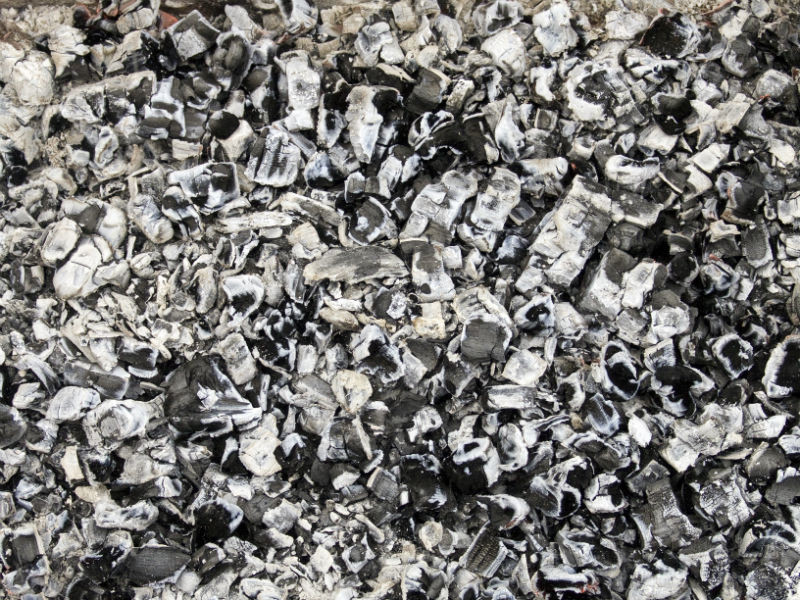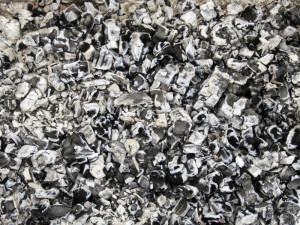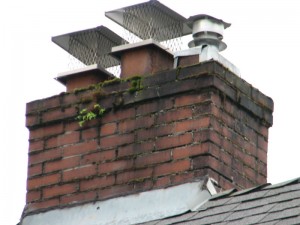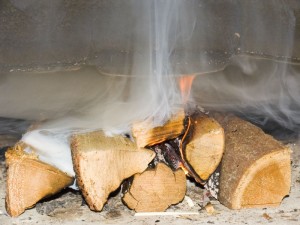
by Mike O'Mara | Jan 15, 2016 | Fireplaces
To keep your fireplace working properly, you must take care of it by performing a few routine maintenance tasks, and keeping the firebox clean is one of these tasks. When you are using your fireplace on a regular basis during the winter, you will need to remove ashes from the firebox every week or two. This task can pose a few safety issues, including accidental fires, so knowing how to dispose of ashes properly is very important. We place safety as our top priority at Weststar Chimney Sweeps, and we would like to share with you the best way of removing ashes from your firebox. Following these steps will allow you to safely remove ashes without any fire hazards.
Assemble your tools.
You will need a metal ash bucket that has a lid, an ash shovel, fire resistant gloves, and a face mask if you are concerned about inhaling ashes.
Allow the ashes to cool down.
We recommend waiting at least 24 hours after the fire has been extinguished before attempting to remove ashes. Sometimes, even 24 hours is not long enough to wait as ashes can burn slowly and smolder. This is why it is so important to know the proper procedure for removing ashes.
Scoop the ashes into the metal bucket.
Open up the fireplace screen and/or doors, and place your bucket in front of the firebox opening. Use your ash shovel to scoop up the ashes and place them in the bucket. If you come across any live embers, push them to the back of the firebox and cover them with a thin layer of ashes. The Chimney Safety Institute of America (CSIA) actually recommends that you leave a one-inch layer of ashes on the firebox floor to help you build and maintain fires. This thin layer of ash can also protect the floor of your firebox.
Place the lid tightly on the bucket and store it outside of your home.
It is very important that you ensure that the lid fits tightly and completely seals the ashes inside the bucket. This will keep the ashes from spilling out if the bucket is knocked over by wind or something else accidentally. Additionally, there could be live embers or smoldering ashes within the bucket, and without a lid sealing the bucket, oxygen could reach those hot ashes to ignite a fire. It is also important to store this bucket outside on a non-combustible surface such as brick or concrete and away from dried leaves and firewood. If there are live embers or hot ashes inside the bucket, the heat could ignite anything combustible nearby.
Wait at least three days to throw your ashes away.
While you can always pour a bit of water inside the bucket to put out any live embers, it is best to wait three days before you place the ashes in your trash. If you have a garden, you can also sprinkle the ashes over your garden beds as well as work the ashes into your compost pile.
For more safety tips on maintaining your fireplace, contact us at Weststar Chimney Sweeps. We are more than happy to provide you with the best ways to safely enjoy your fireplace.
by Mike O'Mara | Jan 7, 2015 | Chimney Cap Choices
One of your best defenses against water penetration and animal invasions of your chimney, a chimney cap sits on top of your chimney’s opening. With several different types of chimney caps available, how do you know which cap is the right fit for the flue of your chimney? At Weststar Chimney Sweeps, we are experienced with fitting all types of chimney caps, even customized caps, and we know the importance of proper installation. We would like to tell you a bit about the different kinds of chimney caps and what you should know about selecting the right kind for your chimney to prevent damaging water leaks.

The main thing to consider when deciding which chimney cap is right for your chimney is the shape of your flue. Chimney caps come in different shapes to fit each type of flue. These shapes include:
ROUND FLUES
Whether you have a clay, masonry, or metal flue, you can find a round chimney cap that can either attach the the outside of the flue or slip inside the flue. Round chimney caps are made from an assortment of materials including copper, stainless steel, and galvanized steel. Some round flue liners require chimney caps that must be inserted inside the chimney flue, such as round flexible flue liners and round solid pack flue liners.
SQUARE AND RECTANGULAR FLUES
The most commonly shaped flue, square and rectangular chimney caps can be attached to the flue, or, if you have a chimney crown, there are chimney caps in these sizes that can attach to the crown. Made from the same metals as the round chimney caps, the Chimney Safety Institute of America (CSIA) recommends you choose a chimney cap constructed from a sturdy, durable, and rust- and corrosion-resistant material to ensure a long-lasting cap. For chimney caps that attach to a chimney crown, you will need to choose from top mounted chimney caps.
OVAL FLUES
Unless you have a custom-shaped oval chimney cap made for you by our technicians at Weststar Chimney Sweeps, you will need to look at rectangular shaped chimney caps that will cover the exterior of your flue.. When you look inside this type of cap, you can see how the corner tabs or interior ledges will accommodate oval flues.
There are other considerations other than preventing water leaks to think about when choosing a chimney cap. These include:
MESH SPARK ARRESTOR
To prevent animals from entering your chimney to take up a new residence and to keep sparks from flying out of your chimney and possibly starting a fire, your chimney cap should be equipped with wire mesh sides. Be sure the mesh openings are between ¾ to ½ inches in size to keep animals out, to contain large pieces of hot debris and ashes, and to allow toxic gases to escape.
COMBINATION OF A CHIMNEY CAP AND DAMPER
You can now find top sealing chimney caps that do double duty as a protective cap and as a damper. Perfect for new home constructions and for older chimneys in need of numerous repairs, the damper is located on the cap. When it is sealed closed, the air loss from your home is reduced by 90%. When the damper is opened, the wire mesh on the chimney cap protects your chimney from invading animals and prevents stray sparks from exiting.
Want to know more about the different types of chimney caps? Contact Weststar Chimney Sweeps today to talk to our expert staff about your many options.
by Mike O'Mara | Dec 30, 2014 | Paint N Peel
We at Weststar Chimney Sweeps want to not only be sure your fireplace and chimney work safely and properly, but we also want your fireplace to look the best it can. If you have noticed that the bricks or stones around and inside your fireplace look dark and smudgy, it is most likely time to clean those bricks and stones. Of course, you could use elbow grease and scrub off the smoke stains, but we have an easier way to clean your masonry fireplace that will leave those bricks and stones looking brand new. We would like to tell you more about this revolutionary product, Paint N Peel Fireplace Cleaner, we use to remove smoke stains.

What is Paint N Peel Fireplace Cleaner?
A water-based cleaning poultice, Paint N Peel Fireplace Cleaner easily removes unattractive smoke, soot, dirt, and creosote stains from masonry fireplace fronts and hearths. Environmentally-friendly, this cleaner leaves behind no noxious odors and can be used indoors and outdoors.
How does Paint N Peel work?
Using our special tools, our chimney sweeps will paint on a thick coating of the poultice and allow it to dry for six to twelve hours. During its drying process, the layer becomes a tough, elastic topcoat on your fireplace surfaces. Once it has thoroughly dried, our sweeps will then peel away the layer to reveal clean bricks and stones.
To what surfaces can Paint N Peel Fireplace Cleaner be safely applied?
This product has been formulated to use on textured and smooth bricks, granite, marble, slate, limestone, concrete, and tile. Of course, Weststar Chimney Sweeps will be sure Paint N Peel can be safely used on your fireplace before we apply it.
Can I use Paint N Peel Fireplace Cleaner myself?
While you can apply this remarkable fireplace cleaner on your own, Weststar Chimney Sweeps recommends you hire professional chimney sweeps to do this job to guarantee the Paint N Peel Fireplace Cleaner is correctly used. We have lots of experience cleaning fireplace fronts and hearths with this cleaner and know exactly what to do. We know which areas will need a thicker coating with more time to dry. And, although this formula is non-toxic, it is always a good idea to let professionals handle any chemical cleaner or solvent. We will also be sure to protect all surrounding carpet, wood, fabric, metal, and painted surfaces from drips or spills that could stain these materials. We will also dust the areas of your fireplace before applying Paint N Peel to ensure the best possible results.
Interested in getting your fireplace front and hearth cleaned with Paint N Peel Fireplace Cleaner? Contact Weststar Chimney Sweeps to schedule an appointment for our sweeps to make your fireplace look new again.




